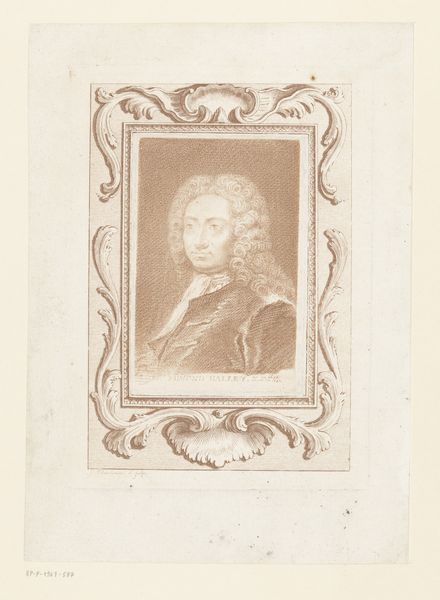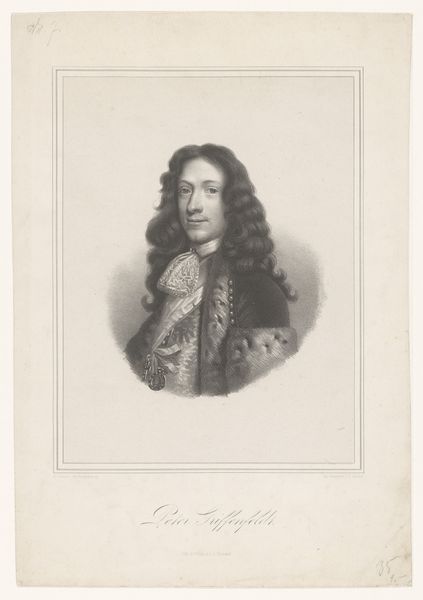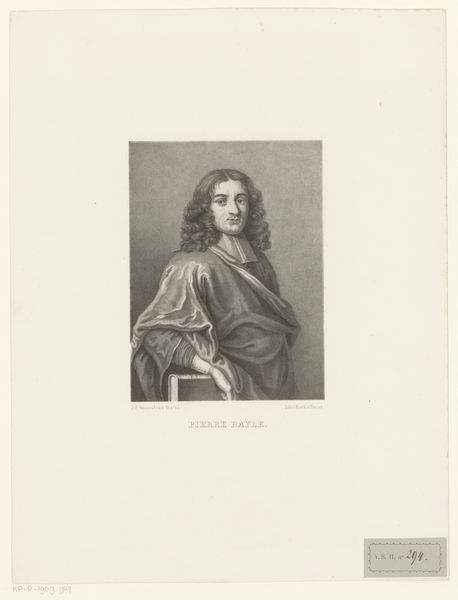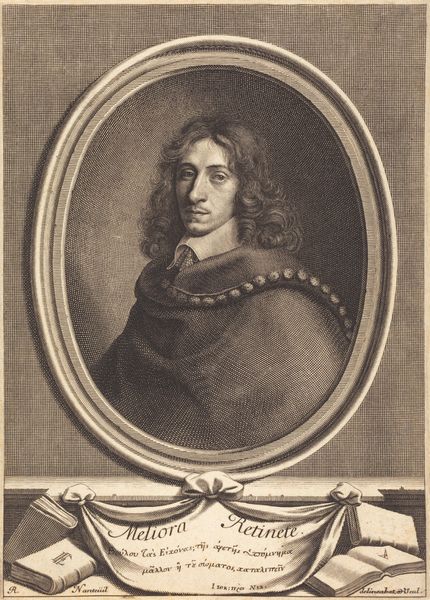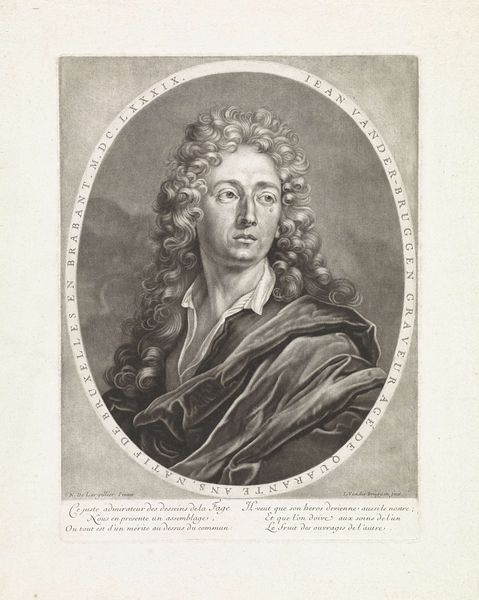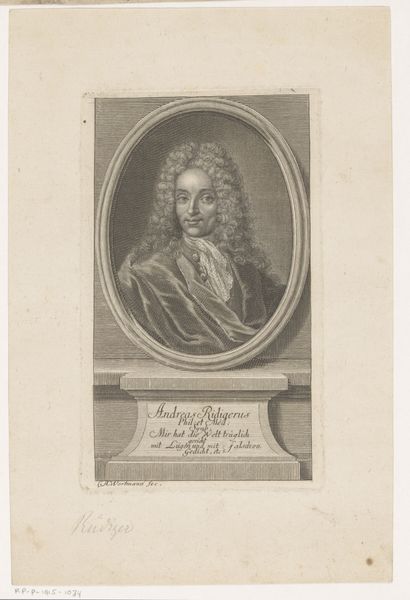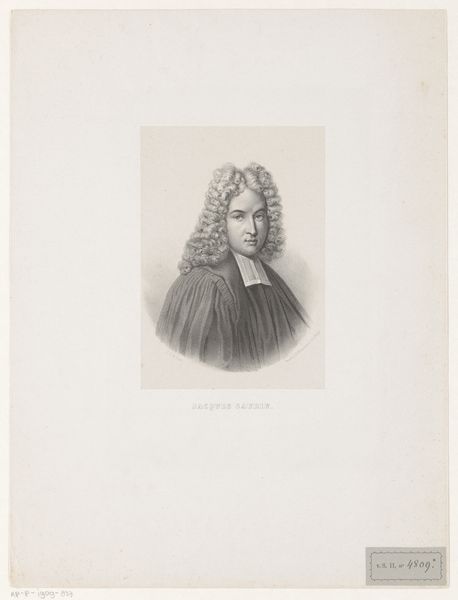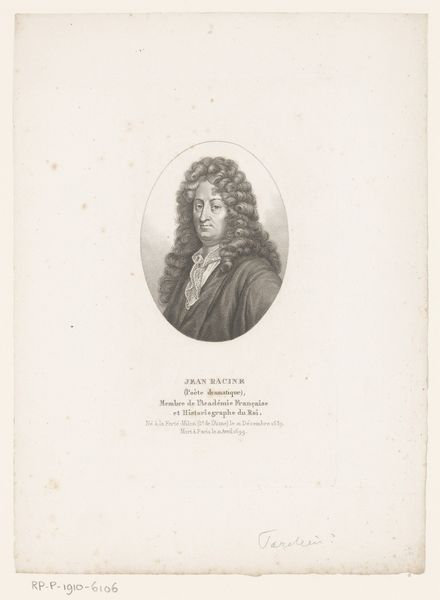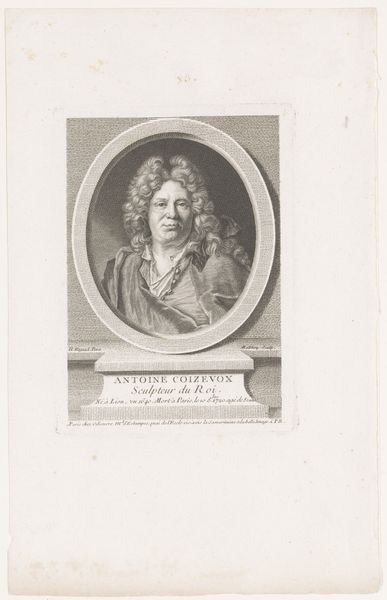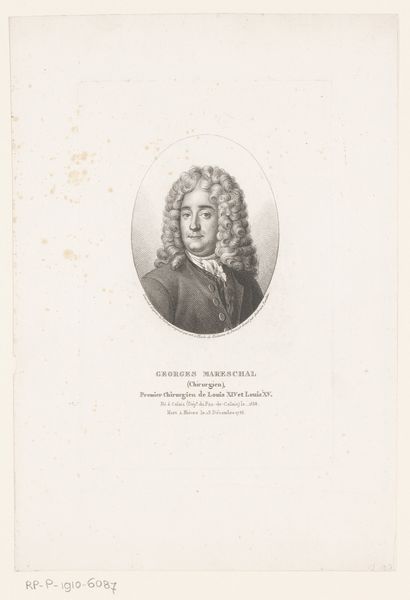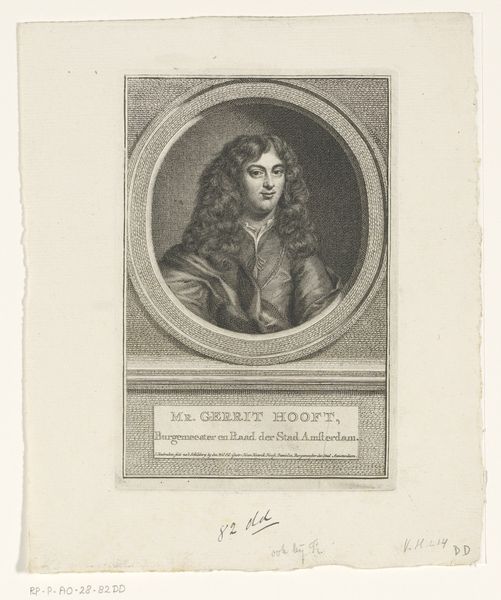
Dimensions: height 489 mm, width 339 mm
Copyright: Rijks Museum: Open Domain
Curator: This is Antoine Maurin’s "Portret van Adriaen van der Werff", an engraving made sometime between 1827 and 1854, here in the Rijksmuseum collection. Editor: The tonal gradations in the piece give it this ethereal, almost dreamlike quality, especially around the edges. There's a fragility conveyed in the subject’s eyes too; it’s all so striking. Curator: Indeed. I’m immediately drawn to the meticulous engraving technique, consider the labour involved in creating such a refined portrait from a single plate. We should really acknowledge the hand of the engraver in interpreting the subject. Editor: I agree. And, placing it in context, it echoes larger trends. Think about portraiture in the 19th century. Engravings like this became vehicles for constructing and disseminating particular images of masculinity and class identity. Adriaen van der Werff, immortalised through this print, reinforces notions of bourgeois status through artistic means. Curator: Good point. Van der Werff as the object. Maurin as the craftsperson carefully selecting his tools and varying his touch to emulate a painting—in a sense, repurposing Van der Werff’s artistic identity. Editor: How about considering that shiny metal object? Clearly visible, it could be an honorific medal that was probably commissioned by a royal person and signifies Adriaen van der Werffs importance. It begs the questions: who holds power and how it manifests and proliferates at any given time. Curator: Yes! From a material standpoint, the printing process itself—the paper, the ink—became a means of mass producing and distributing an idea. Engravings like these facilitated cultural dialogues around artistic skill. Editor: And that’s precisely the strength: seeing this not as an isolated artwork, but as an active participant within a larger web of social and political interactions of that moment in history. It opens up questions on race, class, and even colonial legacies embedded in similar depictions. Curator: Looking closely at the way the lines define the subject’s features and costume allows me to understand more thoroughly how Maurin translated light and texture with metal and acid—that material process makes this so remarkable to me. Editor: Seeing the historical threads interwoven within this portrait makes the entire experience more vibrant for me. It humanises the narrative of art.
Comments
No comments
Be the first to comment and join the conversation on the ultimate creative platform.
